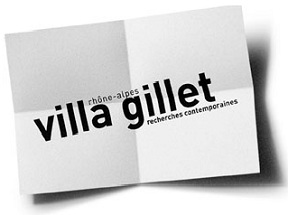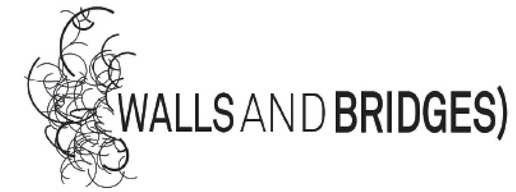"As Many Fingers as Needed": The Body as Musician and its Fetishes
Peter Szendy (born 1966 in Paris) is a French philosopher and musicologist.
He teaches at the Universite de Paris X Nanterre and is a consultant to IRCAM (Institut de Recherche et Coordination Acoustique/Musique), an organization that has been a pioneer in electroacoustic innovation and a mecca for contemporary music. His Écoute, une histoire de nos oreilles (Listen, A History of Our Ears) is a critique of Romantic and Modernist conceptions of listening.
"To comfortably acquire, so to speak, as many fingers as needed," said one of Bach’s sons, Carl Philipp Emanuel, in his Essay on the True Art of Playing the Keyboard (1753). And these words are remarkable, as long as we are prepared to take them literally, and not hastily consider them as one of the metaphors that adorn discourse about music and on the bodies that it evokes.
If we are to hear this statement literally – "as many fingers as needed" and hence more than ten or less than ten, depending on the need of the moment – it should be possible to argue that, in the musical world, some corporeal arrangements are constructed and deconstructed, whose posture and duration do not obey the laws governing the organisms that we are familiar with. Because if we can put forward such an argument about fingers, nothing should prevent us from legitimately extending it to other organs. Which means, for example, that we should also not relegate to the rank of a mere figure of speech another sentence I came across, penned by a columnist who, in 1833, was discussing the use and the effects of the pedals on the piano: "This is how we can imagine three hands on the keyboard," he wrote in all seriousness, even going so far as to say, with respect to the "very important movement of the foot" that was required then of pianists, "that we can call [it] breathing, by comparing it to the action of the lungs of a singer."
A general organology that can accommodate this constant organic invention, or reinvention, to which music gives rise – this is indeed what we must try to ponder, and this is what I have tried to outline in a book entitled Membres fantômes. Des Corps musiciens, published in 2002.
But before going any further, let us try to imagine, as our columnist did in 1833, more than two hands or more than twenty fingers on the keyboard. Let us try to visualize them, not as they could be portrayed in a fantasy movie peopled with improbable monsters, but as they tend to appear from the supposedly "natural" body of a supposedly "human" player.
Let us look at the brief piano recital given by Chico Marx in Go West (1940). What we see is a kind of infinite digital variation on a little tune called "The Woodpecker Song". Sometimes we see the index finger of the right hand detach itself from the other fingers, as if it had been dispatched to an isolated key. Sometimes we see it entering into a trading game, becoming the symmetrical equivalent of the thumb around the pivot of the little finger, repeating the note played by the thumb but two octaves higher. Sometimes it is carried along by the other folded fingers in an ascending glissando, to be propelled by them as their representative to the very top of the keyboard. Sometimes it curls up and comes knocking against the lid of the piano (thus mimicking the woodpecker of the song), while its counterpart on the left hand is held in the air, raised in its function of admonishment, drawing attention to what is being played on the other side. It even happens that the right index finger swings as it floats above the keyboard, contenting itself to signal virtual paths on the keys in a soundless fashion.
This fetish-like index finger, preferred substitute for the other fingers, can itself be replaced, by the middle finger in particular, which, for the duration of a couple of measures, can effectively take its place as pointer finger or indicator. Unless we should assume that the index finger splits in half, front and back, so to speak, two fingers in one that take turns to strike the same key repeatedly from one direction and the other. But in the end, we should probably expand further the space of this keyboard economy and include in this theater of organic exchanges at the keyboard all the possible substitutes that may present themselves. For example, the apple that Harpo is about to bite: Chico grabs it to make it the prosthetic instrument of jubilant roulades over the keys, which provides a virtuoso ending to this showpiece in which swapping organs (the index finger, the middle finger ...) have confronted inanimate objects (the keyboard, the lid, the apple).
Perhaps the concept of effiction that I had introduced in Membres fantômes – having borrowed it from an old tradition – would better enable us to grasp this remarkable proliferation of organs. Indeed, the Latin effictio is that which, in the first century BC, the Rhetorica ad Herennium – a treatise long attributed to Cicero – defined as the description with words or the verbal fashioning of a body, from head to foot. Descartes used this figure in his Meditations on First Philosophy, for instance, to move over his own body, so to speak. He writes: "... I perceived that I had a head, hands, feet and all the other members composing that body which I considered as part, or perhaps even as the whole, of myself... ". Now, what interested me is the effectiveness and efficacy of these formative fictions – their effiction, in a word – in so far as they are also capable of giving birth to phantom limbs, to fictional organs like those evoked by Descartes a little further in the same Sixth Meditation: "... I discovered error in judgments founded on the external senses; and not only in those founded on the external, but even in those that rested on the internal senses; for is there anything more intimate or more internal than pain? And yet I have sometimes been informed by parties whose arm or leg had been amputated, that they still occasionally seemed to feel pain in that part of the body which they had lost...".
This is what had led me to imagine a rhetoric of resonant bodies, a kind of organological grammar, which, by describing the relationships of substitution and echoes between members and organs, could account for what Nietzsche had expressed so well in a posthumous fragment of 1885-1886: namely, that "the formation of an organ" is "an interpretation."
In short, what the concept of effiction allows to articulate, is the very act of "something taking shape", something becoming a body (prendre-corps) as a fiction that embodies and, in order to do this, proceeds by displacements and grafts, inversions and relays, thus deploying strategies and figures, or tropes. This organic tropology probably presents itself in the most remarkable manner through the history of resonant bodies: when, for instance, the fingers of the hand of a pianist multiply by handing over their functions to each other, or when a foot on a pedal acts like a lung modulating the expression of breath.
Cette ressource a été publiée dans le cadre de la cinquième saison du festival "Walls and Bridges", organisé par la Villa Gillet, qui s'est déroulé à New York du 9 au 18 octobre 2013.
Pour citer cette ressource :
Peter Szendy, "As Many Fingers as Needed": The Body as Musician and its Fetishes, La Clé des Langues [en ligne], Lyon, ENS de LYON/DGESCO (ISSN 2107-7029), décembre 2013. Consulté le 30/12/2025. URL: https://cle.ens-lyon.fr/anglais/arts/musique/as-many-fingers-as-needed-the-body-as-musician-and-its-fetishes



 Activer le mode zen
Activer le mode zen![[title-image]1332154748918[/title-image] all rights reserved © Peter Szendy](https://cle.ens-lyon.fr/anglais/images/szendy_1387445329579-jpg)



